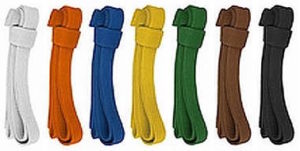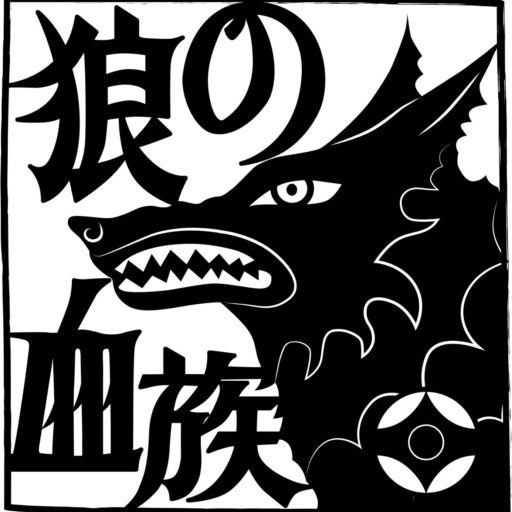Gradings
 Kyū (級) is the term used to designate various grades, levels or degrees of proficiency or experience. Kyū-level practitioners are called mudansha (無段者), “ones without dan”, when practitioners have reached the ranking of first degree black belt, they become shodan (初). The holder of a black belt of any degree is a yūdansha (有段者), “one with dan”.
Kyū (級) is the term used to designate various grades, levels or degrees of proficiency or experience. Kyū-level practitioners are called mudansha (無段者), “ones without dan”, when practitioners have reached the ranking of first degree black belt, they become shodan (初). The holder of a black belt of any degree is a yūdansha (有段者), “one with dan”.
Colored belts have their origin in judo, as does the training ‘gi’, or more correctly, ‘dōgi‘ or ‘Keikogi’. Originally the belts where white or black; white for the less experienced mudansha and black for the more experienced yudansha. White denoted simplicity and purity, and the white belt of the beginner showed that the student began empty, but eventually was filled with knowledge. Using colored belts to denote rank or ability in martial arts was introduced around the turn of the 20th century. Each colored belt has two levels, the second being represented by a stripe at the end of the belt.
Gradings provide an opportunity to test your skills and grow through the demands of a steadily increasing training workload but they are never to be taken for granted. They demand training experience and understanding of the requirements in more challenging degrees as you go through the different levels.
In Kyokushin the grading system is a skills-based system designed to encourage steady improvement; it is not a time-based system designed to recognise attendance frequency. Each student differs and thus progress comes at different rates, therefore, it is difficult to set time-frames which will suit everyone. Never take it for granted that because you have been training for a longer time than someone else or because you attend classes more often, you are automatically able to participate in a grading. Training is the accumulation of experience, and belts are simply a consequence of a constant and consistent pursuit of knowledge and skill.
Focus on your own training and don’t be concerned with making comparisons to others. Focus on steady and solid progress in skill and fitness through the gradual and sound gathering of experience. Ultimately gradings are a demonstration of your understanding of the required skills and overall spirit of Kyokushin.
Here a few suggestions to assist you in your training:
- Be honest with yourself in training. Neither overestimate or underestimate the skills and strength your training efforts have brought you. If we are too self-critical this can hinder our progress.
- Be confident, polite and civilized as you become part of the larger dojo family.
- Listen to sensei and senior students as they have the experience. If you are unsure of anything or have doubts, don’t hesitate to discuss it with sensei or senior students as they are in the dojo to help. Remember any senior student was in the same position you are in now.
- Karate is an individual sport practised as a team; so treat your training partners with respect as they are important to your development and you are as equally important to them.
- The more regularly you train, the deeper your understanding and faster your progress. Be disciplined and consistent; at the end of the day, only you can do this.
Everything adds to your total karate picture at any given level and a grading, when you are prepared, allows you to stand confidently amongst your peers. With an announcement of a a grading speak to sensei about participating and they will inform you whether they think you are ready. They base this judgement on numerous considerations:
- technical skill
- conditioning
- relative maturity
- attitude
- depth of experience
